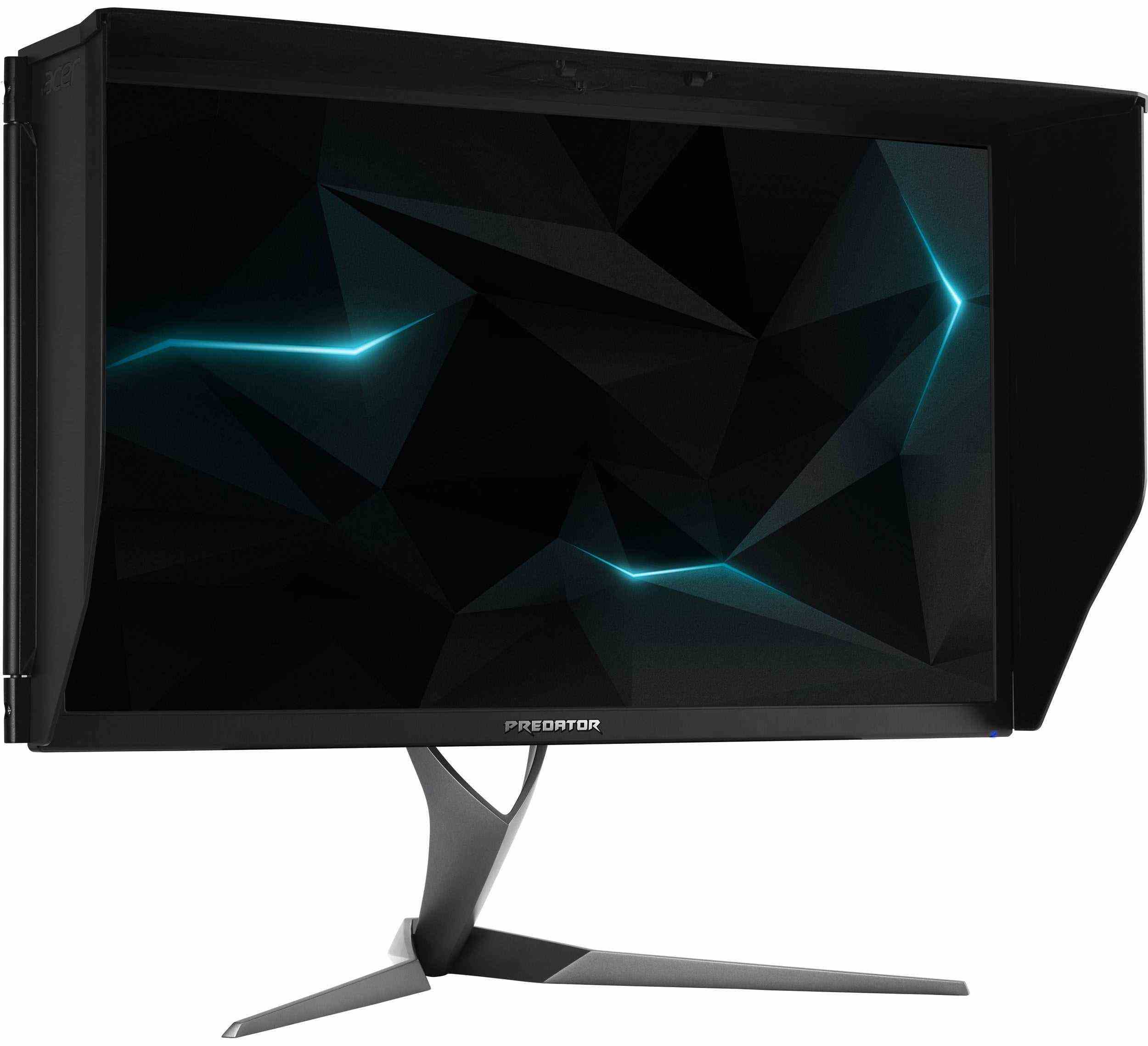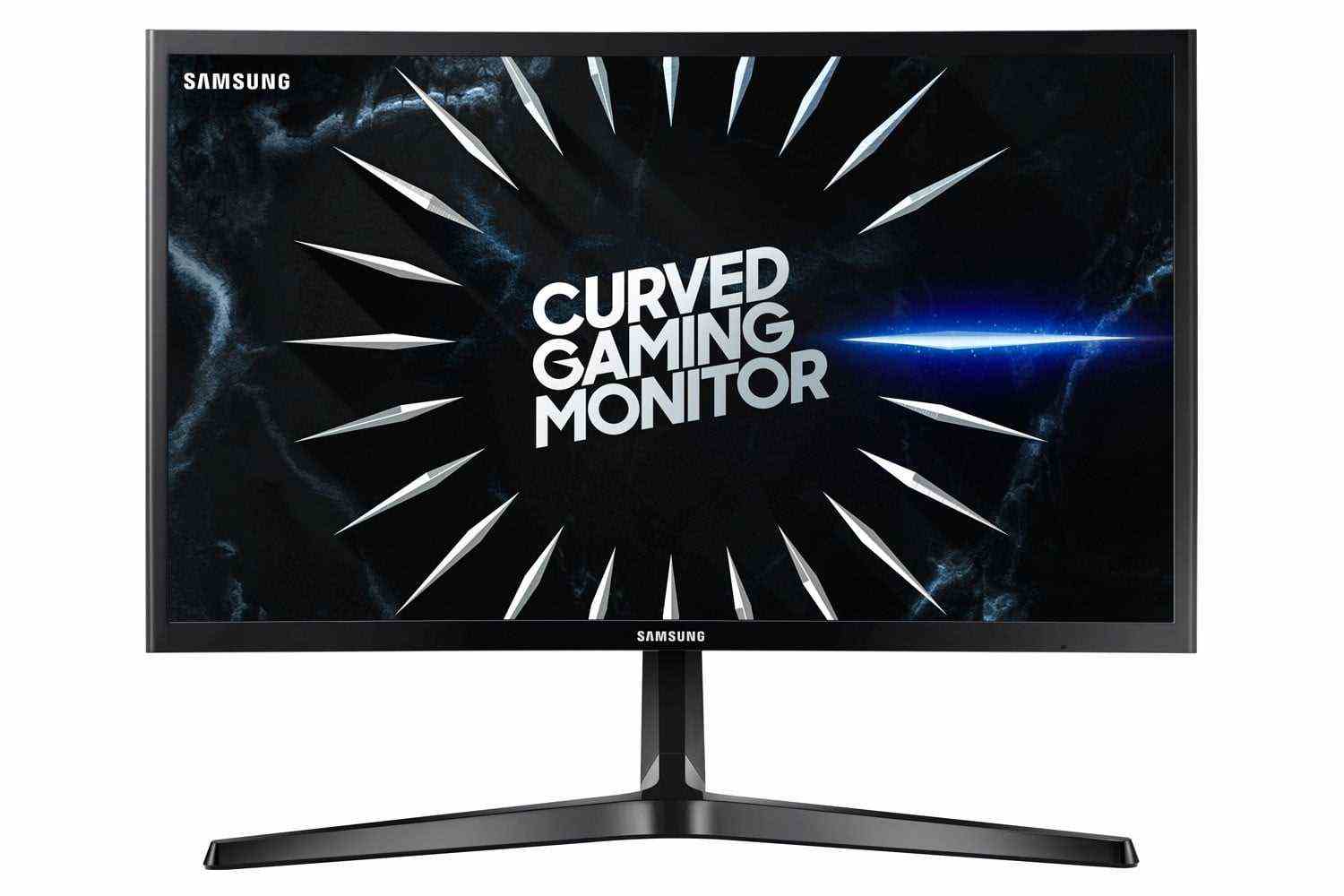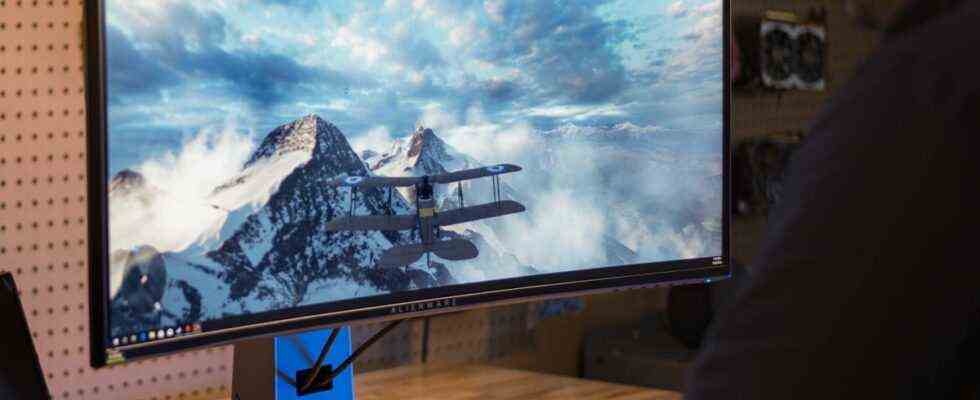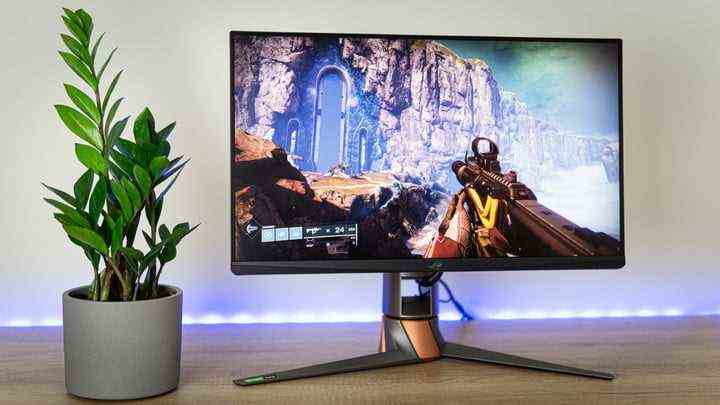A new gaming monitor can enhance your gaming experience and even make you a more competitive player. But picking the best monitor for you can be confusing, especially when deciding the most important specifications, like resolution, refresh rate, or response time. Our top pick is the Asus Rog Swift PG35VQ because of it’s excellent display and G-Sync technology.
We’ve compiled a collection of the best gaming monitors to help you find the right addition to your gaming PC or gaming laptop. They offer the latest and greatest technologies, from 4K resolution to G-Sync and fast refresh rates, all at great prices.
Best gaming monitors
Best gaming monitor: Asus Rog Swift PG35VQ
Why you should buy this: One of the best possible options for gaming performance, HDR, and G-Sync technology.
Who’s it for: PC gamers who want cutting-edge technology and can afford to pay for it.
Why we picked the Asus Rog Swift PG35VQ:
This Republic of Gamers-branded display from Asus is one of its most ambitious models, packed with features to push display quality as far as it can go. The 35-inch panel is both large and curved for better immersion and has a potential 200Hz refresh rate and 2ms response time — plus a maximum brightness of 1,000 nits and Full Array Local Dimming (FALD) for intense and nuanced HDR support. The resolution sits at 3440 x 1440 — an ultrawide version of the more typical 1440p gaming sweet spot. Thanks to Quantum Dot manufacturing, colors and contrast are also excellent, while Asus’ Eye Care software helps cut down on annoying blue light for longer gaming sessions.
Along with an excellent display, this Asus monitor also comes with a high-quality stand, offering great tilt, swivel, and height adjustment options so you can maneuver the screen to exactly where you want it and at whatever angle you choose.
Ports include HDMI 2.0, DisplayPort 1.4, and several USB-A 3.0 connections. There’s also an RGB ambient lighting projection that can be synced with other components for showing off and improving peripheral immersion.
Keep in mind that it is a G-Sync monitor designed for Nvidia GPUs, so double-checking compatibility is important. A new generation RTX 3000-series GPU would be a great fit for the Asus Rog Swift PG35VQ.
Best 4K gaming monitor: Acer Predator X27

Why you should buy this: It’s a beastly 27-inch 4K G-Sync monitor with a 144Hz refresh rate.
Who’s it for: PC gamers who need a fast monitor to match a monster gaming rig.
Why we picked the Predator X27:
While Predator monitors have consistently been some of the best 4k monitors for gaming, the 27-inch X27 really goes out of its way to offer a great display complete with G-Sync, HDR, and a screen that you can overclock to a 144Hz refresh rate with the right connections. We were also very impressed with its brightness of up to 1,000 nits, and our testing also showed strong color accuracy over a wide gamut.
The X27 also makes sure that you have access to all the ports you may need, including two downstream USB-A 3.0, USB-A 3.0 upstream, USB-B, HDMI, and DisplayPort — though sadly no USB-C. The menu joystick and buttons, located on the back of the monitor, allow you to make adjustments and turn on modes like Dark Boost to further customize your experience.
If resolution is important to you, the Predator X27 offers a 4K experience without giving up too much on refresh rate and other key gaming specs, making it a particularly solid choice.
Best budget gaming monitor: Samsung CRG5

Why you should buy this: It’s a 144Hz, 1080p display with a gorgeous curvature and FreeSync 2 support. You’ll find it hard to match at this price.
Who’s it for: Gamers on a budget who still want plenty of features.
Why we picked the Samsung CRG5:
It’s amazing how far monitor technology has come in recent years, not just because of the new and exciting display features we can enjoy at the top end, but because some of our favorite ones are more affordable than ever. Some of the best budget monitors offer high refresh rates, which we think go beyond higher resolutions and even HDR, in making for a smoother, faster gaming experience.
The fact that Samsung’s CRG5 offers a 144Hz refresh rate for not far north of $200 is a perfect example of how much more accessible what were once high-end gaming features, have become.
Not only is the Samsung CRG5 fast, but this 1080p screen has FreeSync 2 support, which means that it technically supports HDR. With a typical brightness of 250 nits, you aren’t going to see much benefit from that, but the lack of screen tearing is a nice bonus. The 1,800R curvature makes this an immersive gaming panel, even if it isn’t the largest, and it also enjoys all of Samsung’s quality of life features, like anti-blue light and flicker-free technology.
Best curved gaming monitor: Alienware Curved AW3420DW

Why you should buy this: Dell’s Alienware 34-inch gaming display can go head to head with the best flat and curved screens and almost always comes out on top.
Who’s it for: Gamers who want a monitor that pays serious attention to detail.
Why we picked the Alienware Curved AW3420DW:
Alienware’s 34-inch curved monitor is an excellent middle-of-the-road option for gamers who don’t want to spend more than $1,000 on a display but still want the best they can get. The 21:9 monitor offers a 3440 x 1440 resolution with a 120Hz native refresh rate backed by Nvidia’s G-Sync technology. The color gamut on this display is so good that Dell measures it with the professional DCI-P3 standard instead of the more common sRGB, which it exceeds.
The Alienware Curved AW3420DW also comes with a 2ms response time (quite good for a display of this size). Ports include HDMI 1.4, DisplayPort 1.2, and USB 3.0 (including power charging options), but unfortunately, no USB-C to work with. We’ll also mention that Alienware’s focus on design detail is very noticeable here: The monitor’s futuristic angles are a stylish success, and the ports are thankfully lined up on one side for easy access without much adjustment.
Best gaming monitor under $300: ViewSonic XG240R
Why you should buy this: ViewSonic has designed an affordable monitor with a surprisingly complete display package, ideal for gamers hoping to save some money.
Who’s it for: Busy gamers who are careful with their budgets.
Why we picked the ViewSonic XG240R:
The price of this ViewSonic monitor is enough to engage our attention, but the specifications are even more impressive. This budget screen is equipped with FreeSync, a 144Hz refresh rate, accurate colors, and even some RGB lighting on the design that you can play around with. It’s a surprising feature set at this price and makes the model an easy recommendation if you need to save money but still want a great gaming experience.
You can also customize the display appearance as well as those RGB lights, although you will need to download third-party software to do it (in this case, programs by Cooler Master, Razer, and others). Ports are a bit more generous: You get connections for DisplayPort, two HDMI, two USB-A 3.0, and a USB-B 3.0.
When it comes to design, the ViewSonic falters a little. The monitor looks uninspired and a little clunky. The speakers, in particular, are poor quality and should be supplemented with headphones or a separate set of speakers. However, there are so many good things going on under the hood here that this monitor is still an easy recommendation.
Our full ViewSonic XG240R review
Best e-sports monitor: Asus ROG Swift 360Hz PG259QNR
Why you should buy this: It’s the fastest gaming monitor ever made.
Who’s it for: Gamers who are serious about e-sports and competing on a professional level.
Why we picked the Asus ROG Swift 360Hz PG259QNR:
It’s not often that gamers can find a monitor built entirely for e-sports use, but it’s no surprise that Asus managed to do it with this exemplary Full HD ROG model. First things first: Yes, it really can reach a 360Hz refresh rate, something not generally available to the average consumer, and strictly dedicated to the smoothest, clearest gameplay possible so you don’t miss a detail and have the lowest input lag possible. That’s backed up by G-Sync technology, an anti-glare coating, and support for HDR10 to get the most out of your brightness levels.
While the 24.5-inch display may seem a little small, that’s intentional: You’ll find a lot of 24-inch monitors used in e-sports, as they allow an ideal range of view so gamers can see all important data on the screen without needing to move their heads. The IPS monitor also includes a 1ms response time, and Asus’s Eye Care technology to help save your eyes during long sessions when you still need to keep focus. There’s even “reflex analyzer” software that can offer pointers on improving your gameplay!
Ports on the ROG Swift PG259QNR include both HDMI 2.0, DisplayPort 1.4, and USB-A 3.0. It also supports desk mounting if you want an extra-secure setup.
Our full Asus ROG Swift 360Hz PG259QNR review
Research and buying tips
What type of monitor is best for gaming?
This very much depends on the type of games you want to play. If you play competitive, fast-paced games, high-refresh-rate monitors are a must as they can reduce input lag and give you a smoother gaming experience. Higher resolutions and HDR are great for more cinematic, AAA experiences, while larger, curved screens add immersion for all sorts of titles.
Panel type is another question entirely and there is a lot of crossover between the three main types. But typically, TN panels are the cheapest and offer the fastest refresh rates and response times at the expense of color accuracy and viewing angles. IPS panels are more expensive and offer richer colors and contrast at a slightly slower response time. VA panels tend to sit somewhere in the middle.
Otherwise, we highly recommend taking a look at our individual monitor reviews to get a better idea of just how a specific model handles gaming and what its advantages are.
Can you see the difference between 144Hz and 240Hz?
Some can, some can’t. Those that do claim to see a difference suggest that once you’ve played a high-speed game on a 240Hz screen there’s no going back. Then again, you have to have a system that can actually push out frame rates that high, so you’d better be packing an insanely powerful graphics card if you hope to see the difference.
If you’re passionate about competitive gaming, 240Hz can give you slightly reduced input lag, so even if you can’t see or feel the difference there is some benefit to be had with the fastest displays out there.
Is there a big difference between 4K and 1080p?
Absolutely, though it’s not as pronounced as going from lower resolutions to 1080p was. 4K is great for slower games or those where a wider view is of benefit, like RTS titles, but even the most powerful gaming PCs struggle to hit 100 FPS or above at that resolution. That’s why 1440p gaming monitors with a high refresh rate are still the sweet spot for affordable, high-end gaming in 2019.
The larger issue is, of course, performance. 4K gaming is really only possible at smooth frame rates if you’ve got a powerful graphics card at your disposal. The majority of players still stick to 1080p to ensure they’re getting the most fluid gameplay possible.
What is a good size monitor for gaming?
Considering the pricing of modern LCD monitors, unless you are extremely limited on space, 24 inches is a great starting point, but about the maximum size we’d recommend is 1080p. 1440p looks great on between 24- to 34-inch monitors, while 4K really needs at least 27 inches to let you see the added detail all of those extra pixels deliver.
There are extremely ultrawide monitors that are built for gaming such as the 49-inch Samsung CHG90, which turns your entire desk into one massive command center. The immersive 21:9 aspect ratio isn’t supported by all games, but most newer games will offer you a far wider view of your surroundings.
If you need a system that can handle mobile gaming, however, it’s best to choose a powerful laptop that can serve as a desktop replacement, while also allow you to pack it up and move around when necessary. Naturally, larger 17-inch screens are best for this (although resolution is less important). We’ve even found that small 13-inch laptops are doing an impressive job of handling games these days.
Does response time matter for gaming monitors?
Response time is typically rated in milliseconds, and highly rated monitors tend to have a 1-6ms response time, depending on factors like their size and panel type. While a short response time sounds good, the rating specifically means how long it takes a display’s pixel to go from totally white to totally black (or fully on to fully off).
The critical takeaway is that milliseconds are an insanely short measurement of time. If you put a 1ms game on one monitor and another monitor with a 5ms game right alongside each other, it would be hard to spot a difference. Refresh rate, input lag, and other issues would be much more obvious. That said, the time down to the millisecond can matter for serious gamers (depending on gameplay), so many continue to search for the lowest response times.
What monitors do pro gamers use?
Monitor choices and setups aren’t are going to be different for each streamer or pro, and these choices largely depend on the game. Many gamers set up several monitors and customize GPU settings, showing how many different factors are at play. Also, keep in mind that it’s common for pros to play on hardware from sponsors, so it may not necessarily be their preferred hardware you’re seeing. With all that information in mind, check out the BenQ Zowie series, which are monitors marketed and tailored to the e-Sports series. We have many other picks for the best gaming monitors that you’ll love.
What is the best budget monitor for gaming?
Our favorite gaming monitor that’s under $300 is the ViewSonic XG240R. It features an astonishing number of other specs appealing to gamers, including FreeSync. The Asus VG248QE, another reasonably priced HD monitor with lots of game-related specs involved, is also worth checking out. These monitors feature a response time of 1ms, but remember, response time isn’t always the most crucial factor to consider.
G-Sync vs. Freesync: What’s the difference?
We encourage you to read our full explanation here. In brief, both are syncing technologies that allow greater communication between a GPU and a monitor. Get a GPU and monitor that both support the same syncing tech, and they can coordinate frame rates, reduce problems with tearing, and provide other visual advantages. G-Sync is the version of the tech offered by Nvidia, and Freesync is the version offered by AMD. Many monitors only have one or the other, so it’s important to match your monitor with your GPU (or your desired GPU for a future purchase). Fortunately, more monitors are appearing that support both types of syncing.
Are curved monitors better for gaming?
They can be. Curved monitors tend to be larger, and the wrap-around effect can be very immersive, especially for the racing game genre and similar experiences. But they also take up more space and aren’t as suited for some activities, especially if two or more people are trying to watch the screen at the same time. Think about how you use your setup before deciding on a curved monitor.
What does HDR do in a gaming monitor?
HDR or High Dynamic Range is a color standard: Compatible monitors can show a broader range of colors, a better contrast ratio, and better brightness levels. Higher HDR standards, like HDR10, support higher visual quality. However, HDR doesn’t automatically make one monitor better than another, and HDR specs can vary (options like DisplayHDR are stricter when it comes to this).
Three important notes about HDR. First, HDR also needs to be supported by specific games, which means that developers have set visual standards to take advantage of HDR’s capabilities. Second, HDR is solely a visual enhancement and will not help in competitive gaming — it can sometimes reduce frame rates, too. Third, HDR generally makes a monitor more expensive, so don’t choose it if you don’t need it.
Can I use my TV as a gaming monitor?
We also have an in-depth guide for this! Basically, yes. TVs have similar options for refresh rates, resolutions, HDR support, and connections like HDMI — plus, HDMI 2.1 added support for the open Adaptive Sync technology, and some TV brands, like Samsung, support FreeSync as well. TVs also come in much larger sizes than monitors, which is useful if you need to sit farther away from the display. There are also more OLED and other advanced display options for TVs.
However, TVs are generally much more expensive than monitors, so you will likely end up paying a lot more for similar specifications. TVs may also lack certain modes, menu options, and customization features that monitors have for gaming.
Can you use a gaming monitor as a regular monitor?
Absolutely. It’s a good idea to set different profiles for gaming vs. regular work vs. entertainment, etc., since some settings can affect your experiences differently. Also be aware that often resolution isn’t as high a priority on gaming monitors, as it can interfere with high refresh rates and other specs, while it may be a more important feature for a regular monitor depending on use.
Editors’ Recommendations



